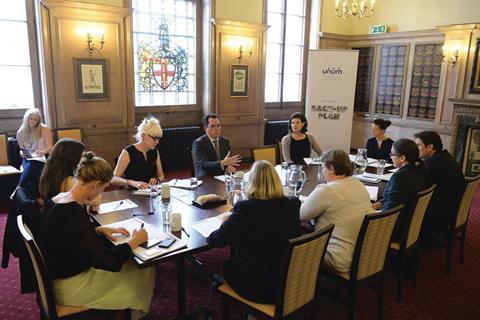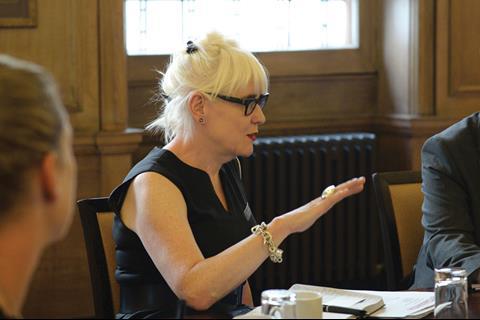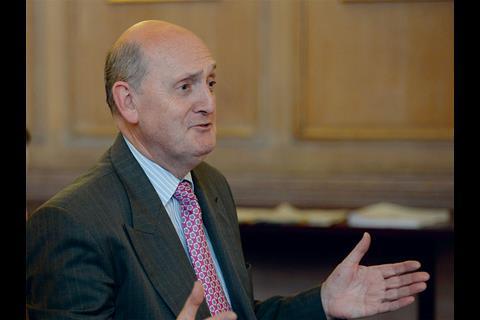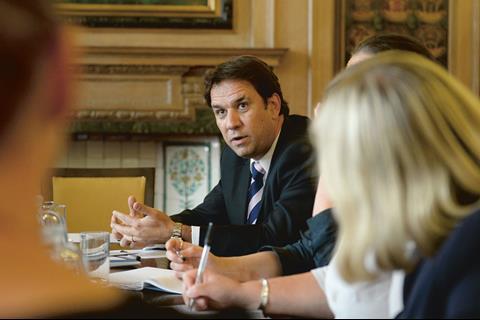Commercial law firms increasingly accept some responsibility for the wellbeing of both lawyers and staff. But providing the right support is not straightforward.
The classic structure of a commercial law firm is a pyramid: partners at the top, trainees at the bottom. Hardwired into such a shape is the idea that one goes ‘up or out’. The process may not be as brutal as ‘up or out’ implies – those who leave may thrive elsewhere, and be keen to stay in touch through the growing number of firm alumnae associations. After all, despite the huge resources dedicated to the process, neither a trainee nor a graduate recruitment partner can be certain that the firm is right for them.
But what if a firm is losing people for the wrong reasons? Because they were placed under too much pressure, were badly managed, coped badly with events in their private life, or had mental health problems that were neither recognised nor supported.
There is a hard business cost to such scenarios, from people working below their best, to those signed off with stress or leaving the firm or the profession altogether. As TLT partner Sasha Butterworth puts it: ‘If we don’t have people who are well and working to the best of their ability, then the business won’t succeed.’
Marco Forato, chief marketing officer for income protection provider Unum, relates the commercial data that supports that view: ‘If you look at the claims we used to have 10 or 15 years ago, cancer by far being number one, followed by back pains and so on [but] we’re seeing a massive increase in stress and mental illness. The problem, we know, is that we only touch that [as an issue] after six months of absence. It’s way too late.’
Recognising that ‘hard’ business aspect, Sophie Turner, partner coach at Pinsent Masons, prefers the term ‘resilience’ to ‘wellbeing’, thereby ‘pushing it nearer to the business’ and making it harder for partners to dismiss what is being said as ‘an HR thing’. ‘Lawyers will put HR out at a distance,’ she notes.
The coaching approach Turner adopts places the issues in the context of improving performance. The thrust of that approach, she says, involves asking the following questions: ‘Wouldn’t it be great, as a partner, to be at your best more consistently?’; ‘What are times where you feel not at your best?’; ‘What are hotspots for fatigue, stress, feeling out of control?’
The aim, Turner says, is for partners to believe: ‘I would like to think more clearly, I would like to adapt, I would like to respond to other people more effectively.’ That allows her to work from a basis that is taken seriously: ‘Let’s look at that from the point of view of your resilience level, which includes your mental wellbeing, and all the things that are around that.’
At Linklaters, ‘talent and engagement’ manager Adele Ellis does not resile from the term ‘wellbeing’ but stresses similar points about the firm’s broad approach, which is ‘two-pronged’: ‘One is helping the individual take responsibility for their wellbeing, but also helping our leaders to support individuals’… mental and physical health.’
Michelle Chance, employment partner at Kingsley Napley, says the firm’s strategy is part of its culture. ‘It’s often said “KN” stands for “kind and nice”, because that’s our culture, and that’s how we treat our employees,’ she notes. Visible efforts this year include a ‘stress and wellbeing’ week in October.
In creating that culture, Chance says the involvement of non-partners has been important: ‘We’ve also got lots of junior fee-earners involved, and giving us ideas. We have choir, we have yoga, subsidised gym, personal training, lots of internal training events, fruit, that kind of thing.’
Laura Devine, principal of international immigration firm Laura Devine Solicitors, has tried to build space and structure for staff and lawyers to address physical wellbeing and stress. ‘We do, in the firm, try to look after people’s physical and mental health. We do it by encouraging exercise, good food – [alongside] very, very hard work.’
Hard work
Caroline Walker, PR manager at Eversheds and a member of the firm’s mental health working group, speaks of the importance of being able to convince the bosses. ‘Making the case is not so straightforward, because you’ve got to have a receptive ear. The language in which you couch this whole area is really important, because it’s very emotive.’ People tend to put up the shutters as soon as you say things like ‘stress’, she adds, ‘particularly, I think, within the legal sector. So I think actually getting the ear of senior management, which is what you have to do with something like this, is not entirely straightforward.’
Walker, a former lawyer, speaks from personal experience, which she has drawn on in part of her current role: ‘I have “come out” at the firm, in terms of my own experience of stress, depression and mental health issues. I started off as a lawyer, and unfortunately had to leave practice because of my own stress and depression issues. I have a story to tell. Senior management at Eversheds were extremely receptive and that is a crucial factor in starting a conversation internally.’ Part of that story extends to the business case, where the impact is tangible, if hard to measure.
As ever in professional services, the behaviour and interests of clients are factors. Here views vary. Chance insists that benefits extend to dealing with clients: ‘You have to deal with clients who may have a mental health problem, and at what point does it become a risk issue?’ she explains. ‘They might be compos mentis to give you instructions at the beginning, but if their mental health deteriorates, you’re often in a position where at what point do you have to say, “I can’t act for you anymore, because you can’t give me clear instructions”?’
‘Also, often you’re advising,’ Chance adds. ‘For example, you’re advising an employer, you’re putting someone through disciplinary. Then all of a sudden, a fee-earner in the team says, “I’ve just had a call from the company saying that person’s now gone and taken an overdose”, or, “You have a client threatening suicide”. You must not underestimate the impact that has on your fee-earners. It’s equipping them to deal with that sort of conversation.’ The impetus, though, is not currently coming from clients. ‘There are a lot of things that come way, way ahead of wellbeing,’ Christopher Digby-Bell, Palmer Capital board member and one-time managing partner of Taylor Garrett (now Taylor Wessing), relates: ‘I think it’s a huge ask, and a long stretch, to expect a client to worry about it.’
You’re putting lawyers under stress, but it isn’t necessarily bad stress, and I think what we’re looking at is where good stress becomes bad stress – where it stops being exciting, and the adrenaline is going
Sophie Turner, Pinsent Masons
Firmly ahead of ‘wellbeing’, he adds, is ‘quality of service, which includes speed of service, which means that I am very conscious of putting pressure on the lawyers who I’m using in that particular firm.’ Price is also a concern. ‘The nearest I think a client will get to it,’ Digby-Bell adds, is to want to see the lawyers with whom he has an ongoing relationship fairly treated – an issue he is prepared to raise with firms. ‘On the whole they get an extraordinarily poor deal, and from time to time, I will tell the law firms concerned that I think that.’
He concludes: ‘I do care about equality, and general equality in law firms, because it has a direct bearing on the service that they give me. But I haven’t yet got down [the list] to wellbeing.’
Equality and diversity seem to be a possible ‘home’ for those seeking to get wellbeing or resilience taken seriously. While clients may not, yet, be asking about wellbeing, asking law firms about their standard of equality and diversity is, for many, part of the selection process.
Clients, and internally partners, could lower unnecessary sources of stress. Walker relates her experience of conducting client research for a consultancy after leaving legal practice: ‘Clients were saying “I sometimes find that I send an email on the Friday night asking for something to be done, and when I get in on Monday, it’s been done. That person must have worked all weekend, and actually I didn’t expect that. I was just sending an email on a Friday night, but they obviously thought – there goes my weekend”.’ She adds: ‘As a client, sometimes you don’t quite know the power of saying “jump!”.’
The upside of clearer communication about expectations should be that lawyers are in better shape to meet and work on real emergencies. As Turner puts it: ‘You’re putting lawyers under stress, but it isn’t necessarily bad stress, and I think what we’re looking at is where good stress becomes bad stress – where it stops being exciting, and the adrenaline is going.’ That is, she says, the point where ‘it’s stretching me’ changes to ‘actually, I’m not supported back at base, I can’t see why I’m doing this’.
That sort of strained resource became a greater problem during the recession, Turner notes: ‘Partners have said to me in the last few years, “Since the … economy tightened, clients have been even more demanding, and I’ve got less resources to do it, and I feel I’ve got nowhere to turn”.’ At the same time, she adds: ‘In terms of the bonus pool, or the pool of resources, that’s reduced too, so there are some added pressures that have come out of the tightening in the economy. Clients have said, “I still want this for this amount, and I still want this quality.” But the lawyers have got less resource to do it.’
Adding to such pressures, several attendees note, is technology – creating a difficulty in the search for what Dr Mary Bradbury (Gazette, 2 September 2013) calls ‘a media-free moment’. Devine expresses the challenge: ‘One of the biggest stresses is technology, and is the fact that no matter how hard somebody’s worked throughout the day, when they’re on the train, they’re on their BlackBerry, their iPad … People feel they’ve got to show that they’re on their BlackBerry, it’s stressful for them, it’s stressful for the family.’
Elizabeth Rimmer, new chief executive of lawyer support charity LawCare, observes: ‘We’re in this hyper-connected world.’ That connectivity has a complex relationship with ‘flexibility’, Chance says. ‘The BlackBerry’ allows flexible working, she observes, but adds: ‘That doesn’t mean walking out the office at 5pm and not checking your BlackBerry till 9am the next morning, because you have still got to be able to [serve] the client. Whether that is delegating it down to junior fee-earners and then picking it back up at 8pm once your kids are in bed or whatever. You have to do that. Flexibility isn’t just one way.’
From the client’s perspective, Digby-Bell identifies the ‘oversupply of lawyers’ as an issue. ‘If it’s a buyer’s market and I want the deal done for a fairly unreasonable price in a totally unreasonable time frame, [firms will] do it,’ he adds.
There are a lot of things that come way, way ahead of wellbeing. I think it’s a huge ask, and a long stretch, to expect a client to worry about it
Christopher Digby-Bell, Palmer Capital
In the context of a buyer’s market, it can be the individual who needs space or time who ‘pushes back’ on attempts to assist them. As one attendee relates, the experience of raising the issue with a staff member when colleagues have noticed that they are not currently coping with work not uncommonly invites the response ‘I’m fine’, even when discreet proposals are made to lower their sources of ‘bad’ stress. In that situation, ‘what do you do? Push them out the door? Take their keys away from them?’
Chance suggests that employment law provides a helpful structure to address some aspects of wellbeing in an organisation. The Equality Act is relevant here, she notes.
Where people have pulled out of work due to ‘stress’ or for other health reasons, attention to ‘getting them back’ is a priority, says Unum’s Forato. ‘Earlier intervention’ is needed, he explains.
Older workers especially want to return: ‘We have a rehab and vocational specialist who will just work with them and try to move them to another job, reduce hours, whatever. What we know is the earlier we start working with them [the better]. So if they are out for three weeks, four weeks, and we start talking to them about switching jobs, or any other vocation you can get into, the results are much better than if [this is done] seven months down the road.’
The impetus for invervention, prevention and support should, Turner suggests, come from the fact that the law attracts people with certain personality traits that make them more vulnerable than the average person. ‘The very people we attract into the law are people who are susceptible to a lack of resilience, because we endorse it as law firms,’ she explains. ‘We want perfectionists, we want people who want to get approval, genuinely are quite passive, are not outspoken, are risk-averse – so you take that combination and put them under the pressure. Add the fear of failure, also a huge [factor], and then you’ve got the imposter syndrome.’
Holistic approach
In that atmosphere, the visibility of the firm’s approach is more important than drafting the perfect policy, some suggest. Rimmer says lawyers ‘want to see that modelled, they want to see that partner, or that person in the firm say, “Actually, I’ve been stressed,” and that’s where I think the difficulty comes. How are you going to get people in those positions of leadership or authority within a practice to actually say that? It takes a huge leap of faith and courage… we don’t talk about these things, particularly in the workplace.’
As a member of TLT’s governance committee, Butterworth is keen that wellbeing is placed in the context of a ‘holistic approach to our employees, looking very much at their development as individuals’.
Would resilience, wellbeing and support become greater priorities if they were more explicitly linked to the way managers and leaders are assessed?
Chance asks: ‘In terms of line management, getting managers engaged in spotting the signs early enough, should we think about putting it in our appraisal system?’ Just as many are appraised for ‘leadership and management’, she wonders: ‘Should that [constitute] how well you look after the physical and mental wellbeing of the employees that you manage? If you’re being assessed on it, and your bonus or your profit shares are partly dependent on it, you’ll focus on it a bit more.’
Clients might be compos mentis to give you instructions, but if their mental health deteriorates, you’re often in a position where at what point do you have to say, “I can’t act for you anymore, because you can’t give me clear instructions”?
Michelle Chance, Kingsley Napley
For all that clients are not generally recognising firms’ efforts here, others note that external recognition for good work – through awards for example – would be beneficial. Walker says: ‘You’d have some wellbeing awards. Part of my role is doing awards submissions, and we’re all very competitive. Everyone wants to win awards. If you had wellbeing awards, it would highlight the importance of the issue, and I can guarantee you people would start to come up with great wellbeing initiatives within their firms.’
Several of those present are from firms that have internal awards and incentives related to supporting the firm’s ‘vision and values’, another possible vehicle for recognition.
Pending greater client interest, Ellis suggests, there may be ways in which a forward-thinking firm can assist clients. She points to Linklaters’ recent attainment of the National Equality Standard. It’s a standard ‘lots of our clients are now involved in going for’, so the firm has been able to share its own experience with those clients.
Law firms are, by their own admission, at a relatively early stage in thinking about wellbeing, resilience and support as these relate to stress, and mental and physical health. Set against the best intentions are a range of challenges. There are strong in-built assumptions about what constitutes ‘failure’ and ‘weakness’. And there are the unavoidable physical stresses of the job – client demands, a challenging economic environment, an ‘up or out’ career structure, and the omnipresent urgency that can provide ‘good’ as well as ‘bad’ stress.
This is a sophisticated and challenging area of practice management to address, where language and example matter. All the more reason to pay proper attention to it.

















![David Lester (senior partner at Blythe Liggins), Darryl Barnes, Jagdeep Sandher (head of dispute resolution at Blythe Liggins)[4]](https://d1d8vslyhr7rdg.cloudfront.net/Pictures/274x183/4/2/8/116428_davidlesterseniorpartneratblytheligginsdarrylbarnesjagdeepsandherheadofdisputeresolutionatblytheliggins4_981603_crop.jpg)















1 Reader's comment